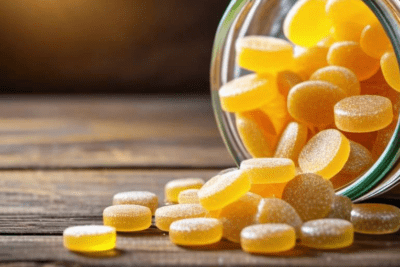
Is Our Food Safe? A Guide to US Food Safety

- Is Our Food Safe? A Guide to US Food Safety
- Understanding Food Safety Regulations in the US - Is Our Food Safe? A Guide to US Food Safety
- Common Food Safety Concerns and Misconceptions - Is Our Food Safe? A Guide to US Food Safety
- Ensuring Food Safety at Home - Is Our Food Safe? A Guide to US Food Safety
- Understanding the Food Supply Chain - Is Our Food Safe? A Guide to US Food Safety
- The Role of Education in Promoting Food Safety - Is Our Food Safe? A Guide to US Food Safety
- Implications of Food Safety for Vulnerable Populations - Is Our Food Safe? A Guide to US Food Safety
- Future Trends and Innovations in Food Safety - Is Our Food Safe? A Guide to US Food Safety
Is Our Food Safe? A Guide to US Food Safety
Food safety is a crucial concern for all Americans. Understanding the regulations and guidelines in place is essential. This article aims to provide an overview of food safety standards, government agencies' roles, and common misconceptions. We'll cover safe home practices, food supply chains, education importance, impacts on vulnerable groups, and future food safety trends. Stay informed to ensure the safety of the foods we eat.
Understanding Food Safety Regulations in the US - Is Our Food Safe? A Guide to US Food Safety

To ensure food safety, it's vital to understand US regulations. This section covers safety standards, guidelines, government agency roles, and common certifications/labels.
Overview of Food Safety Standards and Guidelines
Food safety standards protect public health and ensure food quality. Set by agencies like the FDA and USDA, these regulate food production, handling, and distribution.
These standards address areas like food handling, storage, cross-contamination prevention, cooking temperatures, labeling, and allergen control. Understanding and adhering to these standards is essential to minimize the risk of foodborne illnesses and promote consumer safety.
Role of Government Agencies in Ensuring Food Safety
The FDA, USDA, and CDC regulate and enforce US food safety to safeguard public health.
These agencies collaborate to develop policies, conduct inspections, provide guidance to food establishments, and respond to food-related emergencies. They collaborate with state and local health departments for compliance and quick response to outbreaks or contaminations.
Common Food Safety Certifications and Labels
When it comes to food safety, certifications and labels play an important role in providing consumers with confidence and assurance. Certifications like HACCP indicate that a food establishment follows strict safety measures.
Labels can also provide important information regarding the safety and quality of the food product. Common labels include USDA Organic, meeting organic standards, and Non-GMO Project Verified, indicating no genetically modified organisms.
Understanding these certifications and labels helps consumers make informed choices based on their food safety values.
Common Food Safety Concerns and Misconceptions - Is Our Food Safe? A Guide to US Food Safety

Foodborne illnesses are a major concern in ensuring food safety. Understanding and debunking common myths surrounding these illnesses is crucial to prevent their occurrence and protect public health.
Debunking Myths about Foodborne Illnesses
There are various misconceptions related to foodborne illnesses that need to be addressed:
- Busting the Myth: Symptoms of foodborne illnesses might not show immediately after eating contaminated food. They can manifest within a few hours to several weeks.
- Severity of Foodborne Illnesses: Some people mistakenly assume that foodborne illnesses are mild and short-lived. However, they can cause severe symptoms, leading to hospitalization and even long-term health complications.
- Odor and Taste Myth: Spoiled or contaminated food doesn't always smell or taste bad. Some harmful bacteria don't change the food's sensory attributes, making detection tricky.
- The Color of Meat: The color of cooked meat is not a reliable indicator of its safety. It is essential to ensure that the internal temperature of the meat reaches the recommended level to prevent foodborne illnesses.
- Effectiveness of Microwaving: Contrary to popular belief, microwaving does not kill bacteria present in food. Adequate cooking temperatures are necessary to eliminate harmful microorganisms.
- Freezing Does Not Eliminate Bacteria: Freezing food does not kill bacteria; it merely slows down their growth. It is important to handle and store frozen food properly to maintain its safety.
Exploring the Link between Food and Chronic Diseases
The impact of food on chronic diseases has gained significant attention. Understanding this link allows individuals to make informed dietary choices to reduce the risk of developing such conditions.
Addressing Concerns about Artificial Ingredients and Additives
There can be concerns regarding the use of artificial ingredients and additives in food. It is important to address these concerns by providing accurate information about their safety and permissible levels of consumption.
By debunking myths and exploring food's link to diseases and artificial ingredients, we can better understand food safety concerns and promote a safer food environment for everyone.
Ensuring Food Safety at Home - Is Our Food Safe? A Guide to US Food Safety

When it comes to food safety, it is essential to prioritize safe practices in your own kitchen. By adhering to safe food handling and cleanliness guidelines, you can reduce foodborne illness risks and ensure safer home-cooked meals.
Safe Food Handling Practices in the Kitchen
- Always wash your hands thoroughly before handling any food, especially after handling raw meat, poultry, or fish.
- Use separate cutting boards for raw meat and vegetables to avoid cross-contamination.
- Cook foods to the appropriate internal temperature to kill any harmful bacteria. Use a food thermometer to ensure accuracy.
- Refrigerate perishable foods promptly to prevent bacterial growth. Avoid leaving them at room temperature for extended periods.
Proper Storage and Preservation Techniques
- Store raw meats, poultry, and seafood in sealed containers to prevent their juices from contaminating other foods.
- Keep your refrigerator temperature at or below 40°F (4°C) to slow down bacterial growth.
- Label and date all leftovers to ensure their freshness and consume them within a safe timeframe.
- Freeze foods that you don't plan to consume within a few days to maintain their quality and inhibit bacterial growth.
Importance of Maintaining Clean Food Preparation Surfaces
- Regularly clean and sanitize all cutting boards, countertops, and utensils after each use, especially when switching between different food types.
- Use a solution of one tablespoon of unscented chlorine bleach mixed with one gallon of water for proper sanitization.
- Ensure that your kitchen is free from pests, as they can contaminate food and surfaces.
- Regularly wash dishcloths, sponges, and towels to prevent the build-up of harmful bacteria.
By adopting safe practices at home, you shield your family from foodborne illnesses. Food safety begins with you, and each step towards it ensures a healthier dining experience for all.
Understanding the Food Supply Chain - Is Our Food Safe? A Guide to US Food Safety

The food supply chain plays a crucial role in ensuring the safety and quality of the foods we consume. From farm to table, several stages ensure food safety standards are maintained.
From Farm to Table: Ensuring Safety at Every Stage
The journey of food begins at the farms, where careful cultivation and harvesting practices are undertaken. Farmers follow guidelines to minimize the use of harmful pesticides and ensure proper handling of crops. They also prioritize the health and welfare of livestock, implementing appropriate animal care and welfare practices.
As food moves from farms to facilities, proper storage and transportation prevent contamination. Temperature and handling are vital for the safety of perishable items like dairy and produce.
At retail or foodservice locations, proper handling and storage reduce the risk of foodborne illnesses. Regular inspections and audits are conducted to ensure compliance with safety regulations at each stage of the supply chain.
Examining Food Processing and Packaging Practices
Food processing facilities play a vital role in transforming raw ingredients into safe and ready-to-consume food products. Stringent hygiene practices are followed to prevent cross-contamination and ensure the removal of any potential hazards.
In addition to maintaining cleanliness, processing facilities adhere to specific guidelines for cooking methods, ingredient sourcing, and labeling requirements. These practices help ensure that food products are safe, accurately labeled, and meet the necessary quality standards.
Similarly, packaging practices focus on maintaining the integrity and safety of food products. Proper packaging materials and techniques are employed to prevent spoilage, contamination, and tampering. Adequate labeling provides essential information, including expiration dates, ingredients, and allergen warnings.
Ensuring Quality Control and Traceability in the Food Industry
Quality control measures are implemented at various stages of the food supply chain to uphold safety standards. Regular testing, sampling, and analysis of food products help identify any potential contaminants or deviations from quality parameters.
Traceability systems monitor ingredient sources and food flow, allowing rapid responses to safety issues and precise product recalls.
Moreover, the use of technology, such as blockchain, is gaining prominence in ensuring transparency and traceability in the food industry. This enables consumers to access detailed information about the journey of their food products, including sourcing, processing, and safety certifications.
In conclusion, understanding the food supply chain is essential in maintaining the safety and quality of the foods we consume. Through careful practices at each stage, from farm to table, safety standards are upheld, and potential risks are mitigated. Quality control and traceability systems bolster the food industry's integrity, enhancing consumer trust and public health.
The Role of Education in Promoting Food Safety - Is Our Food Safe? A Guide to US Food Safety

In order to ensure the safety of the foods we consume, education plays a vital role. Understanding health and nutrition education enables individuals to make informed food safety and quality choices.
Importance of Health and Nutrition Education
Health and nutrition education is essential for promoting food safety. Educating people on food's impact enhances understanding of safe, nutritious consumption. Educational programs highlight risks of poor food handling and the advantages of healthy choices.
Empowering Consumers to Make Informed Food Choices
Education empowers consumers to make informed decisions when it comes to selecting and preparing food. With food safety guidelines, storage tips, and label knowledge, individuals can navigate the food landscape confidently. Empowered consumers become active participants in ensuring their own safety, as well as that of their families and communities.
Collaborations and Initiatives for Improving Food Safety Awareness
Collaborations and initiatives between government agencies, educational institutions, and community organizations are instrumental in enhancing food safety awareness. These partnerships create educational materials, host workshops, and run awareness campaigns on food safety. Collaboratively, they enhance the reach and effectiveness of food safety education across society.
Implications of Food Safety for Vulnerable Populations - Is Our Food Safe? A Guide to US Food Safety

Understanding the Impact on Children and Elderly Individuals
Children and elderly individuals are particularly vulnerable when it comes to food safety. Their immune systems may not be as strong, making them more susceptible to foodborne illnesses. Additionally, their bodies may not be able to handle certain toxins or contaminants present in unsafe foods. It is crucial to prioritize their safety by ensuring that the foods they consume are properly handled, stored, and prepared. Targeted education campaigns for caregivers and healthcare providers can lower foodborne illness risks in vulnerable groups.
Addressing Food Safety Concerns for Individuals with Weakened Immune Systems
Individuals with compromised immune systems, like those with HIV/AIDS or on cancer treatment, have increased risks from unsafe foods. These individuals are more susceptible to infections and may have a harder time fighting off foodborne pathogens. Providing those with compromised immune systems guidance on safe food practices, including proper cooking and avoiding risky foods, is crucial. Healthcare providers should also give tailored advice for informed food decisions.
Exploring the Disparities in Access to Safe Food
Inequities in access to safe food can have severe consequences for vulnerable populations. Low-income communities, rural areas, and certain demographic groups may face challenges in accessing affordable, nutritious, and safe food options. These disparities can contribute to higher rates of foodborne illnesses and chronic diseases within these populations. Addressing disparities with policies for equitable safe food access, backing community initiatives, and boosting education on nutritious choices is vital. Collaboration between government agencies, community organizations, and stakeholders is essential to create lasting solutions.
Future Trends and Innovations in Food Safety - Is Our Food Safe? A Guide to US Food Safety

In the ever-evolving landscape of food safety, several exciting advancements are on the horizon. These innovations boost detection and prevention of foodborne illnesses, reinforce safety, and elevate trust in the food supply chain.
Advancements in Food Testing and Detection Methods
New technologies are being developed to revolutionize food testing and detection methods. These advancements utilize techniques such as genomic sequencing, biosensors, and rapid pathogen identification. With these tools, food makers and regulators can quickly detect contaminants, taking fast action to minimize risks and protect health.
Emerging Technologies for Ensuring Food Safety
Emerging technologies play a crucial role in ensuring food safety throughout the production and distribution processes. Blockchain and IoT boost traceability, while automated systems enhance quality control. Using real-time monitoring and predictive analytics, these innovations spot and address safety hazards early, lowering the chances of foodborne outbreaks.
Role of Data Analytics in Enhancing Food Safety Measures
Data analytics has emerged as a powerful tool in enhancing food safety measures. Using data from the food supply chain, stakeholders can identify potential risks and trends. This information can drive the development of targeted interventions, resource allocation, and policy decisions. Additionally, advanced analytics can enable the identification of patterns and anomalies, facilitating continuous improvement and prevention strategies.
Future trends and innovations promise to improve food safety and public health. By using technology and data-driven strategies, we can navigate the evolving food landscape's challenges.
Our top advice is to consult professionals for revolutionary diabetes guidance to drastically improve your health.
Visit at this time the link that keeps clicking on it









